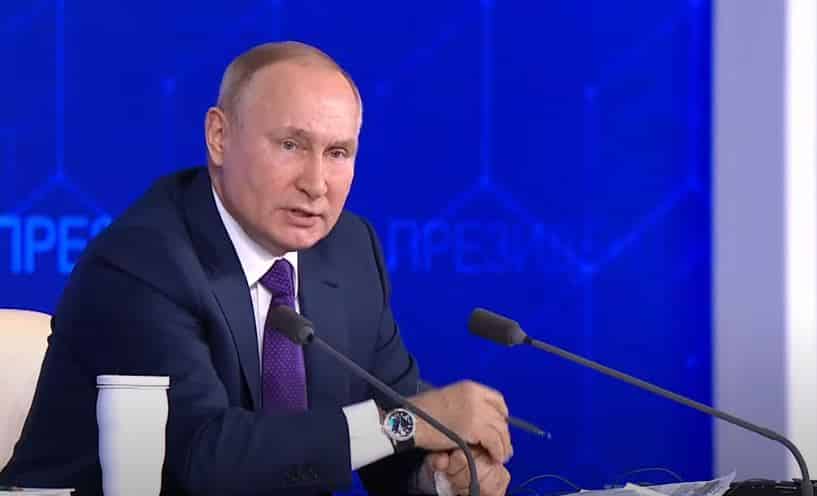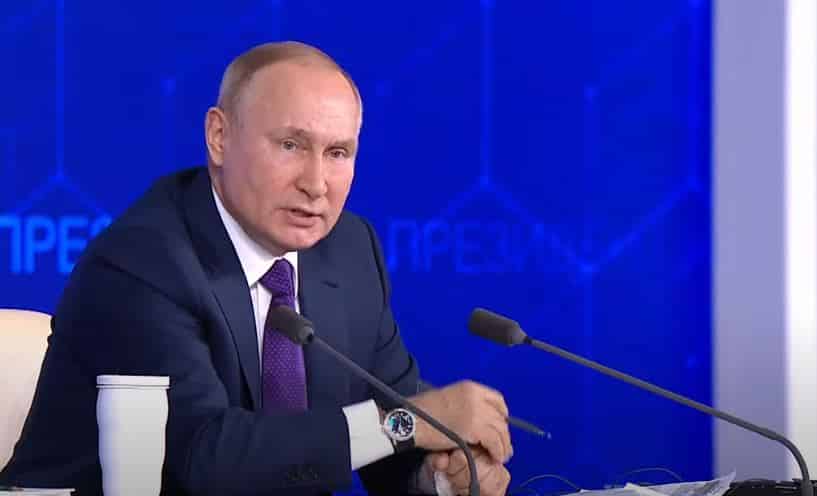Vladimir Putin was “defiant” during his end-of-year press conference last Thursday. The Russian president, who has held these impressive question-and-answer events for the past 20 years, was “bellicose.” He was “threatening.” So we read in the all-the-same-always American press.
Here’s a gem from one Mary Ilyushina, a CBS News correspondent in Moscow: Putin is worried about the military activities of NATO members in Ukraine, she tells us, “you know, on Russia’s doorstep, which is what Putin believes Ukraine is.”
Putin believes. Got it. Mary Ilyushina, my nominee for president of the Overseas Press Club. I have other words for Putin’s performance before 500 domestic and international journalists, and it is far more pertinent to our circumstances. Putin was confident. He was clear, well-informed per usual, and meant neither more nor less than what he said.
I realize it is difficult for us, we Americans, to comprehend a political figure who is clear, well-informed, and means what he or she says. But this is what is noteworthy about Putin’s four-hour appearance. This is what’s worth our consideration.
Putin’s year-end presser, the Kremlin transcription of which is here, follows a series of developments that, in my read, has set in motion a profound shift in East–West relations as these play out along Russia’s border with Europe and across the Eurasian landmass.
“Putin wants to restructure the whole security architecture of Europe,” Mary Ilyunshina reported. Dead on this time, Mary. While Putin articulated no such thought, this is a serviceable summary of exactly his intent.
It is difficult to say just when the train of events now playing out between Washington and Moscow began. One can go back to the “civil society” funding the U.S. began sending Ukraine in the early post–Cold War years. But good enough here to mark down Ukrainian President Volodymyr Zelenskyy’s Sept. 1 summit with President Joe Biden as the occasion that set this recent phase in motion.
NATO & Ukraine
Zelenskyy wanted assurances that the Biden regime would hold his hand as he continued to ignore Ukraine’s Minsk II commitments and stoked increasing tensions with Russia. He got that. But he didn’t get what he truly came for: As noted in this space at the time, Biden stopped well short of any commitment to advance Ukraine toward membership in the North Atlantic Treaty Organization.
I may have misread that occasion as more of a setback than it was for the corrupt, Nazi–supported Russophobes running the Kiev regime.
What has since ensued leaves NATO membership well in the distance, but there are treaty documents and there are weapons shipments, infrastructure contracts, foreign mercenaries, purposeful naval provocations, and assorted other “facts on the ground.”
So far this year the Biden regime has approved $450 million is security assistance to Ukraine, bringing the total allotted since the U.S. inspired the February 2014 coup in Kiev to $2.5 billion.
During their Oval Office sit-down, Biden stayed awake long enough to promise Zelenskyy $60 million more in small arms, ammunition and radar systems. This materiel began arriving on Dec. 10 and will continue into the new year. Beyond that more, surely.
Britain is now at work constructing two naval ports along Ukraine’s Black Sea shoreline; in October the U.K. agreed to lend Kiev $1.6 billion to pay for an assortment of British-made naval vessels, some new, some outdated scows of the kind the West typically sells the non–West.
U.S. and British naval maneuvers off Russia’s Black Sea coast are now routine. Western military officials now talk of deploying potent new technology, all the way up to nuclear-capable missiles, along the alliance’s Russia-facing eastern front. We now have Russian reports that British mercenaries have joined the forces from NATO members already deployed in Ukraine. The numbers Russia is (unofficially) putting out: 10,000 troops and mercs from NATO members on Ukrainian soil, 4,000 from the U.S.
NATO–schmATO, if you see what I mean. The thought in Washington, London and Brussels seems to be, Well, we can’t put Ukrainian membership to paper —that might be a provocation too far — but, the hell with it, we can treat Kiev as more or less a member anyway.
Since the autumn we have had incessantly alarmist reports that the Russian Federation is amassing troops and materiel in its western region near the border with Ukraine. I read everything from 60,000 Russian soldiers to 175,000. Who knows? Maybe none, maybe the higher number (or higher than the higher number).
Fair use excerpt. Read the whole article here.


